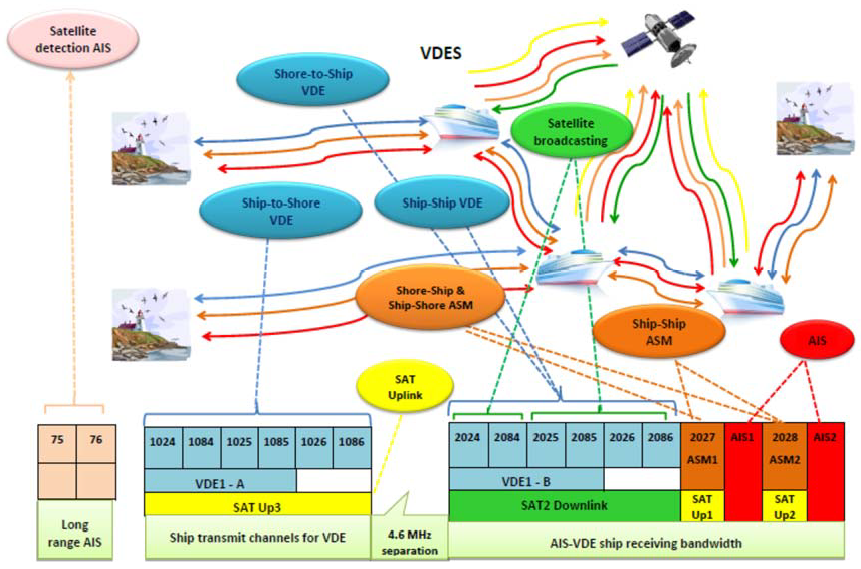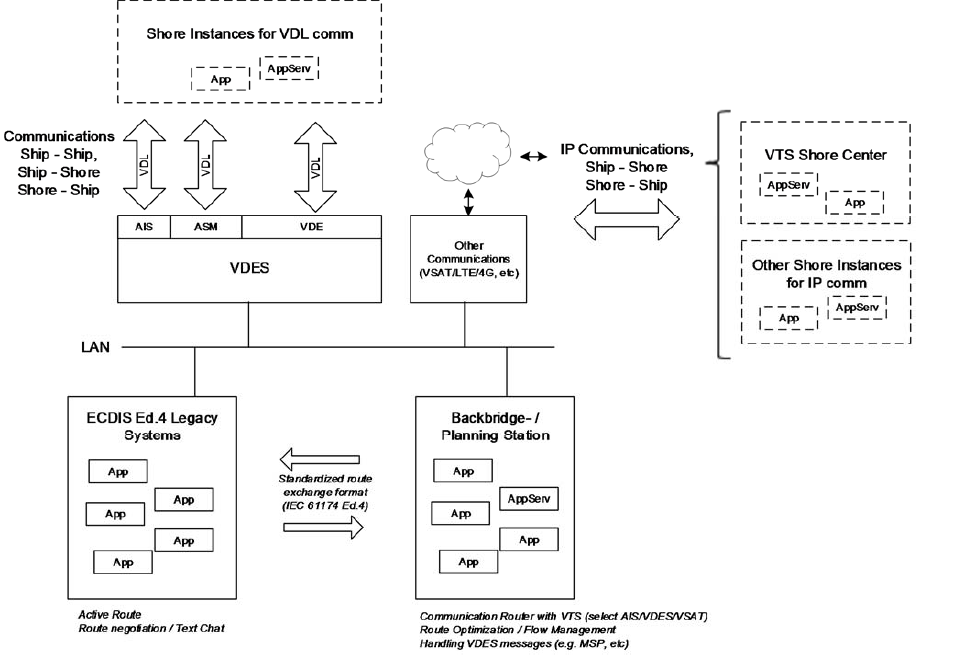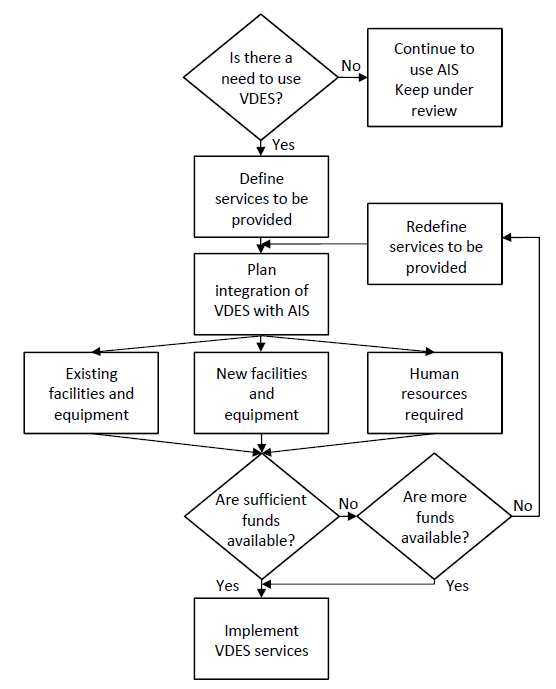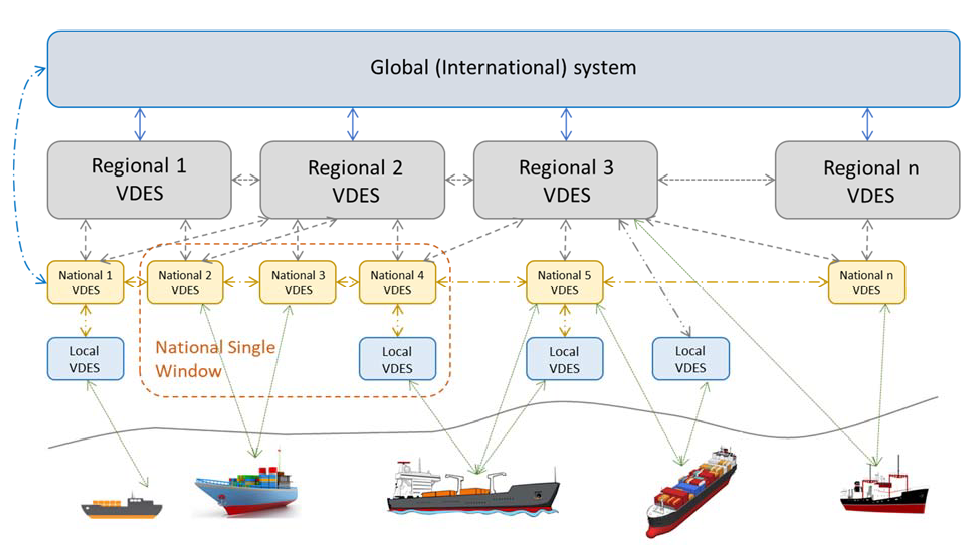The VHF Data Exchange System (VDES) is being developed by IALA and is seen as an effective and efficient use of radio spectrum, building on the capabilities of AIS and addressing the increasing requirements for data through the system. New techniques providing higher data rates than those used for AIS is a core element of VDES. Furthermore, VDES network protocol is optimized for data communication so that each VDES message is transmitted with a high confidence of reception. VDES increases the capability for digital data exchange in a manner similar to AIS, which includes provision of data to vessels in a geographic area (broadcast), to a specific vessel or a group of vessels in a geographic area (addressed) or to a fleet of vessels (addressed).
Background
AIS is well recognized and accepted as an important tool for safety of navigation and is a carriage requirement for SOLAS vessels (Class‐A). With increasing demand for maritime VHF data communications, AIS has become heavily used for maritime safety, maritime situational awareness and port security. As a result, overloading of AIS 1 and AIS 2 created a need for additional AIS channels. Using the VHF marine band (International Radio Regulations Appendix 18) AIS can broadcast data to vessels in the vicinity of the AIS unit. AIS can also transmit an addressed message.
International Telecommunications Union (ITU) has recognised the efficiency and the necessity for digital communications, has produced technical standards and has revised the VHF marine band (Radio Regulations Appendix 18) to designate channels for data transmission. It is recognized that both analogue voice communications and digital communications will share the band. The VDES, as envisioned by IALA and presented to ITU, addresses the identified need to protect AIS along with essential digital communications contributions for e‐Navigation and GMDSS Modernization.
The VHF marine band (Radio Regulations Appendix 18) was initially used for transmission of voice communications on 25 kHz channels. The ITU introduced the first marine data transmission system, DSC (Digital Selective Calling)1 to help ensure that calling and distress communications attempts were successful. VHF DSC transmits data at 1.2 kbps, slow by modern data standards, but very robust. At the request of the IMO to improve safety of navigation, ITU introduced another VHF data transmission system, AIS2, which provides navigation and identification data for ships, shore stations, aids to navigation and search and rescue devices at 9.6 kbps.
ITU introduced a standard3, with options for 25 kHz, 50 kHz and 100 kHz channels at data rates up to 307.2 kbps in order to improve spectrum efficiency in 2012. Both voice and data communications coexist in the VHF marine band. The developments in maritime radio technology, including the introduction of software defined radios
(SDR) coupled with enhanced capabilities for digital data exchange over existing VHF marine band spectrum resulted in the development of the VHF Data Exchange System (VDES). VDES builds on the experience gained through the development of AIS, and also provides the capability to transmit to a specific vessel (addressed); to all units in the vicinity (broadcast); to a group of vessels (addressed); or to a fleet of vessels (addressed).
Consequential to WRC‐15, the ITU standard for VDES, Recommendation ITU‐R M.2092‐0, was approved. A remaining outstanding issue is the approval of the satellite component for the VDE channels which is targeted for approval at WRC‐19.
VDES functions and frequency use – full system

Concept for VDES

VDES implementation matrix

VDES into the Common Shore Side Architecture

